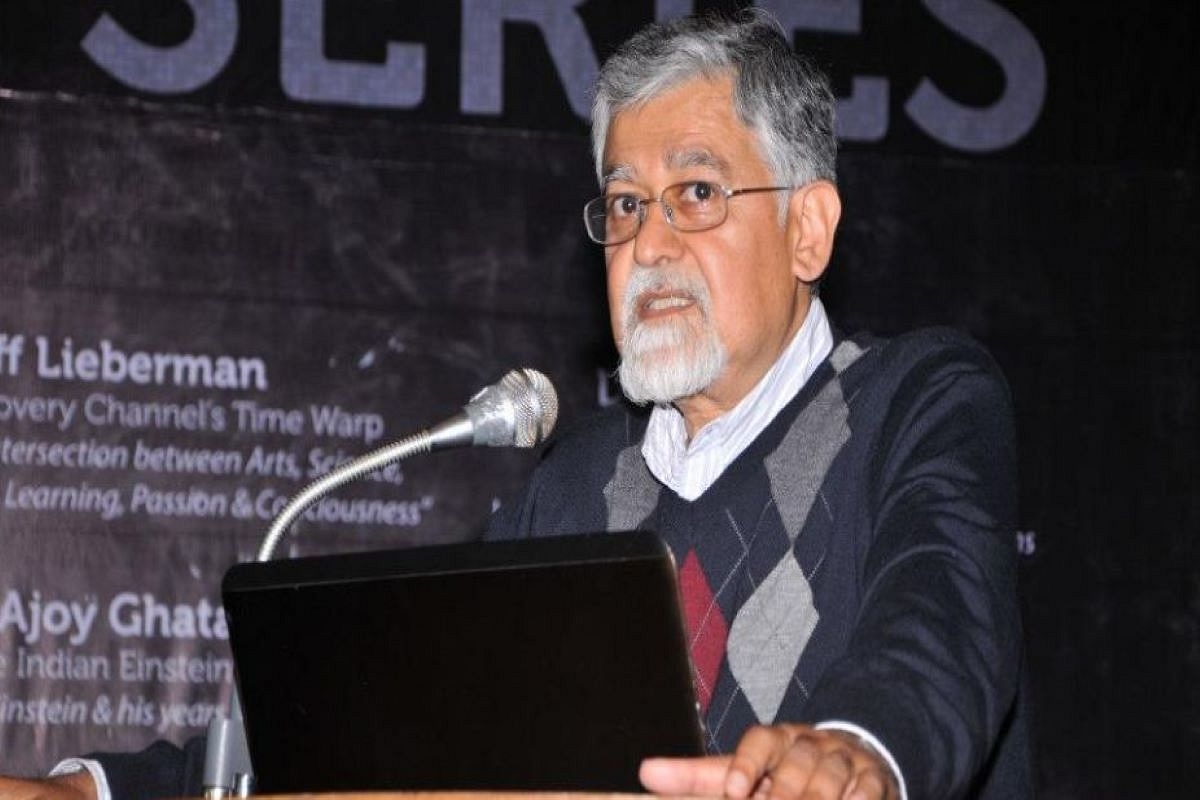News Brief
NITI Aayog Member Arvind Virmani Predicts 6.5 Per Cent GDP Growth For Current Fiscal Despite Global Uncertainties

NITI Aayog Member Dr Arvind Virmani.
NITI Aayog member Arvind Virmani in an interview to PTI has stated that his projection for India's GDP growth is 6.5 per cent, with a margin of error of plus or minus 0.5 per cent.
This is notwithstanding high crude oil prices and increased uncertainty due climate changes.
He explained that this estimate is based on the balancing effect of global GDP (gross domestic product) fluctuations, assuming normal changes.
Regarding claims made by certain US-based economists that India is overstating its economic growth, Virmani observed that some former officials lack an understanding of how GDP is constructed due to their academic background.
Looking back 10 years ago, Saudi Arabia and the US were on the same geopolitical platform and used to coordinate their actions. However, this dynamic has changed in the last five years, according to Virmani.
In a significant development, international crude oil prices have surpassed the $90 per barrel mark for the first time in 10 months and are currently around $92 per barrel.
A notable trend observed recently is that both Saudi Arabia and Russia have reduced their oil production when prices reached reasonable levels.
According to Virmani, the uncertainty surrounding El Nino conditions has resurfaced due to climate change. This has further exacerbated the issue.
In response to a query regarding the decline in household savings to a five-decade low, Virmani clarified that it is the net household saving that is decreasing, not the gross household savings.
Virmani explained, "The gross household savings ratio has consistently been on the rise. However, the net household savings ratio is declining due to the faster increase in consumer debt."
When questioned about the significance of the decline in net household savings, Virmani pointed out that economists specialising in macroeconomics have consistently stated that India's debt-to-GDP ratio is relatively low.
During discussions, it has been observed that India has been compared to every country in the world in terms of debt-to-GDP ratio.
Experts have consistently pointed out that there is a significant potential for increasing this ratio in India.
It is worth noting that the debt-to-GDP ratio for households in India is currently at a manageable level and is not excessively high or unsustainable.
According to Virmani, the government has also effectively managed food inflation.
Support Swarajya's 50 Ground Reports Project & Sponsor A Story
Every general election Swarajya does a 50 ground reports project.
Aimed only at serious readers and those who appreciate the nuances of political undercurrents, the project provides a sense of India's electoral landscape. As you know, these reports are produced after considerable investment of travel, time and effort on the ground.
This time too we've kicked off the project in style and have covered over 30 constituencies already. If you're someone who appreciates such work and have enjoyed our coverage please consider sponsoring a ground report for just Rs 2999 to Rs 19,999 - it goes a long way in helping us produce more quality reportage.
You can also back this project by becoming a subscriber for as little as Rs 999 - so do click on this links and choose a plan that suits you and back us.
Click below to contribute.
Latest